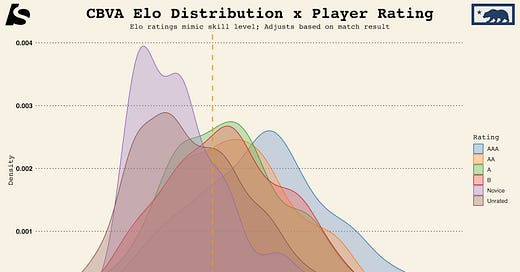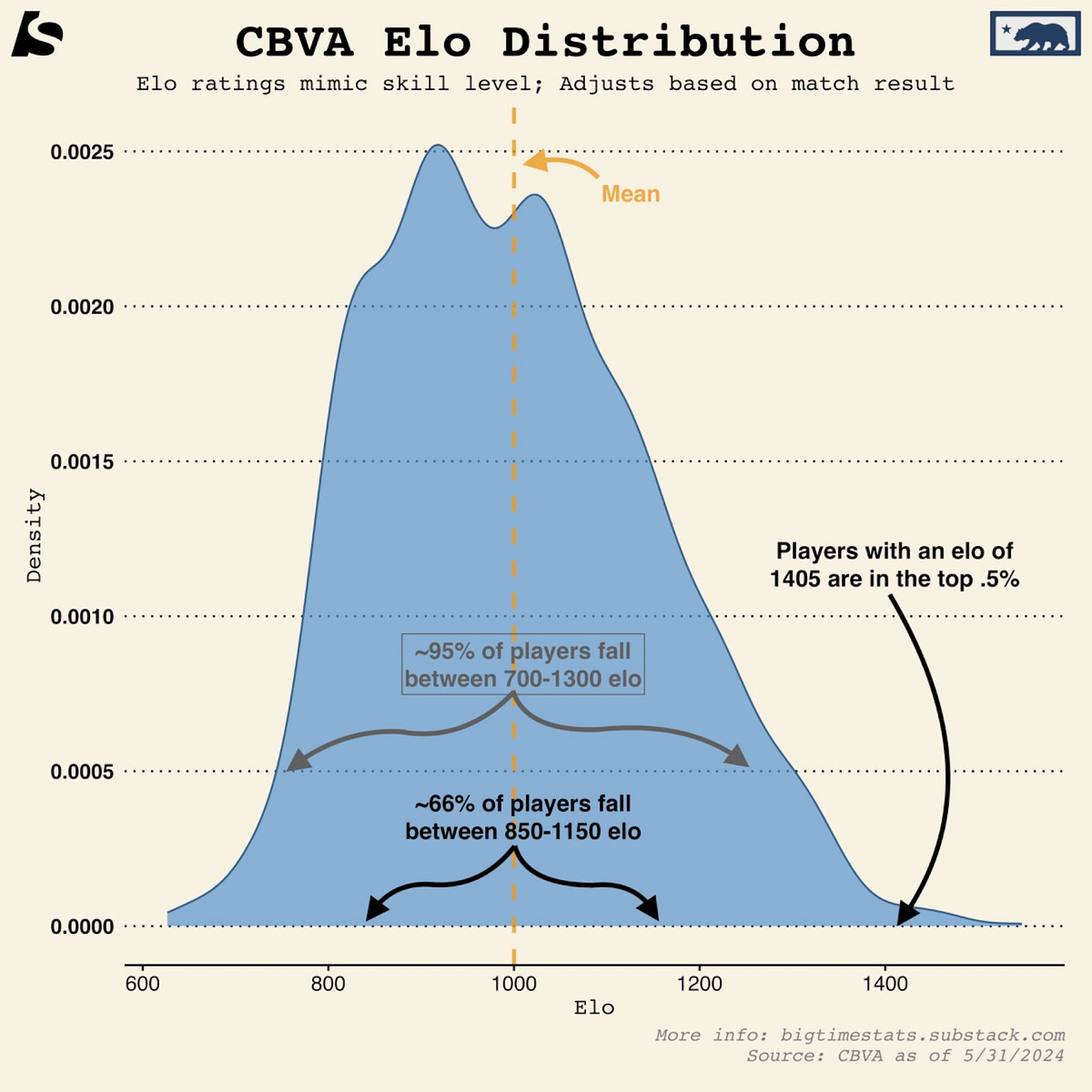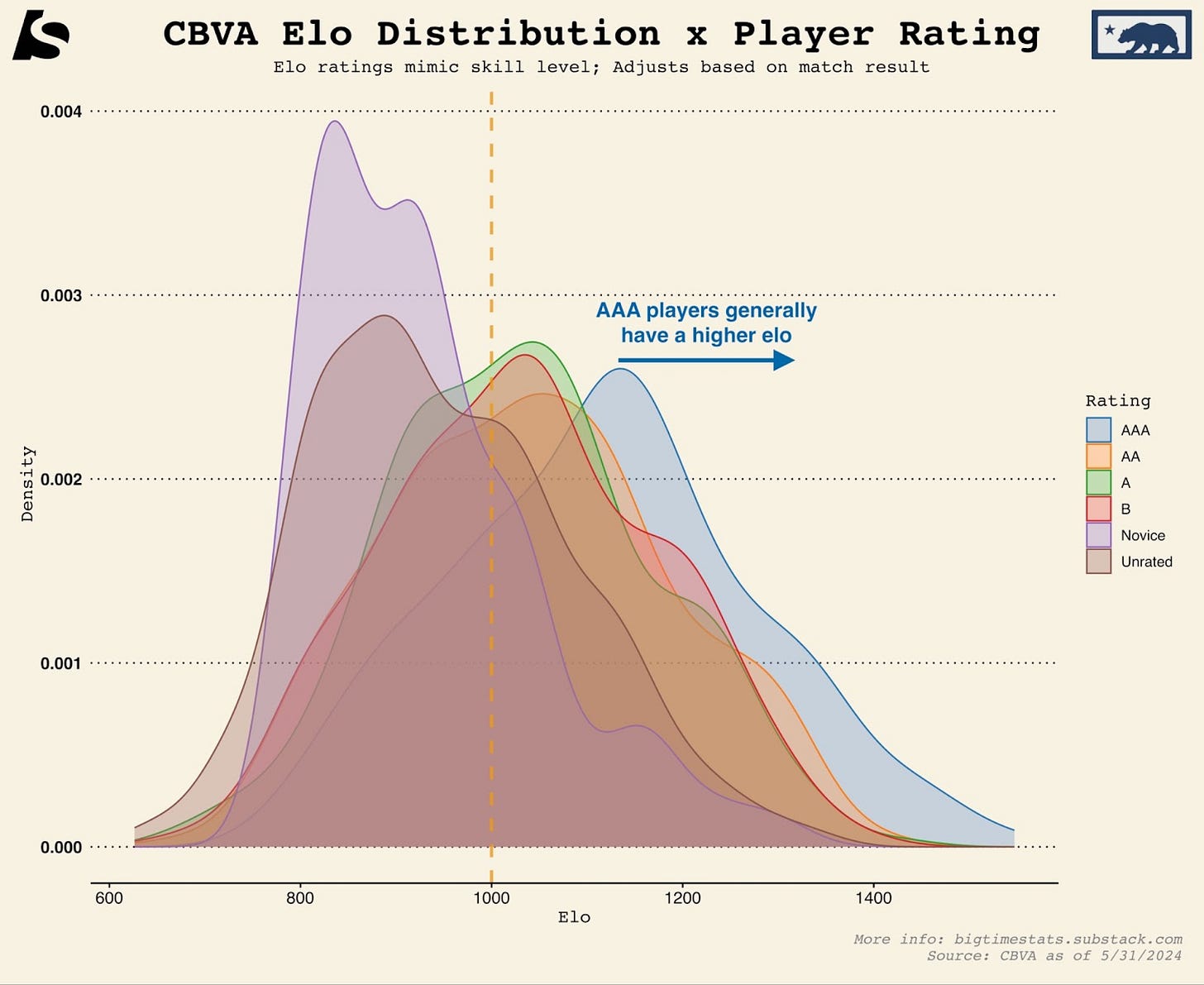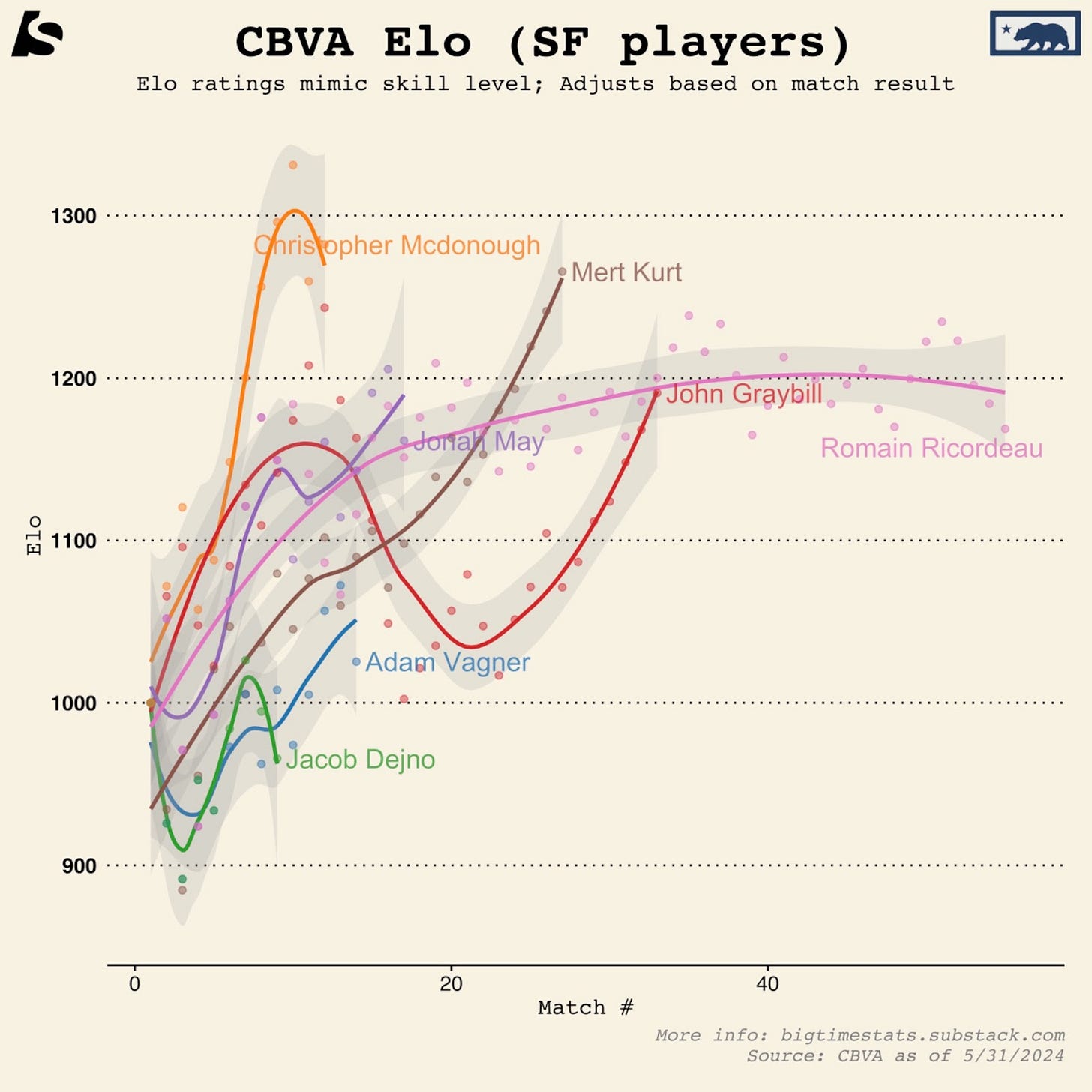The CBVA (California Beach Volleyball Association) recently refreshed their website to include individualized match scores and outcomes. Players who referee matches are now required to keep track of every point which gets uploaded to the CBVA website.
With this comes a wealth of new data and information. I dug in to find some unique trends.
Basic Trends
We can start to look at basic trends like:
Top players based on the total # of matches played. These are your weekend warriors who play as often as possible!
Top players based on their winning percentages. These are very successful players who have likely won a tournament or 2 before.
Top players by total # of Wins - combination of winning players and players who play a lot of tournaments
Elo Ratings
What is an “Elo rating”?
Originating from Chess, Elo ratings are power ratings meant to represent the strength of a player or team.
Elo moves up or down based on the strength of the opponent you beat or lose to. For example, if you beat a 2500 level chess grandmaster, your Elo will jump significantly higher than beating a 1000 level beginner.
Elo ratings are also predictive. In the long run, equal elo ratings should roughly indicate a 50/50 chance of beating your opponent. A 1500 level player / team should beat a 1000 level opponent roughly 95% of the time, or 19/20 games.
Elo ratings are zero-sum, meaning that the rating you gain is also taken away from your opponent. This differs from rankings in tennis or beach volleyball, which are generally based on the points you gain from laddering in tournaments. Higher finishes = higher point values, regardless of the strength of your opponents or draw.
Elo in Beach Volleyball
Using the 2024 match data from the CBVA website, I constructed my own Elo ratings for all adult level competitions. I combined all divisions together as any differences should show up in the final elo rankings.
I used a similar approach and parameters to FiveThirtyEight’s tennis elo but accounted for doubles pairings by naively taking the average elo between 2 teammates and updating accordingly.
So, how do the Elos look for CBVA players?
The ratings follow a normal distribution, with a mean of 1000 (starting elo for all players), and standard deviation of ~150.
As expected, higher CBVA rated players generally have a higher elo compared to lower rated players.
We can also look at the cumulative distribution to see the percentiles that correspond to each elo.
Normal distributions generally follow the 66/95/99.7 rule, whereby 66% of all data lie within 1 standard deviation of the mean, 95% within 2 standard deviations, and so forth.
1150 (+1 standard deviation) corresponds to the 84th percentile (or 50% + 66% / 2).
1300 (+2 standard deviations) corresponds to the ~97th percentile (or 50% + 95% / 2).
Top 20 CBVA players ranked by Elo
I ran the elo algorithm for all matches played in 2024 (through 5/31) to get the top 20 players.
Unsurprisingly, pro and semi-pro players like Lev Priima, Dylan Maarek, Adam Roberts, and Cash Adamsen rise to the top, with elos in the top .5% of the field.
Elo trends for top players
The top players have all had a sharp rise to the top of the elo leaderboards given their high match winning percentage. Each data point represents the players elo as of that match, with the subsequent match # going up or down depending on the outcome (win / loss).
As players play more matches, elos become more stable, adjusting by smaller values based on wins and losses.
San Francisco player trends
Among current and former SF players, Chris (@thetwinsplayvolleyball) has had a meteoric rise to briefly surpass 1300 elo (top 3%) after his win at the Santa Cruz AA. Meanwhile, Mert Kurt has been on a steady rise after a 2nd place finish in the Santa Monica AA down south.
Let me know if you have any questions or feedback. Subscribe to stay in the loop for any new beach volleyball and stats explorations!













This is so cool, I'm so interested in your work! I commend you for such a cool project! I'm wondering why some B level players who played few games have a higher ELO than AA players who have played many games. Does it have to do with the starting ELO (which is also different for both players for some reason)?
Adam, This is amazing work. I’m the President of the CBVA and I’d love to chat, support your work and potentially even link this to our site if that’s Ok with you. Please reach out at your convenience. Chris@campsurf.com.
Also, I saw a header on wins/losses, but I couldn’t find that actual data. Would love to learn more.